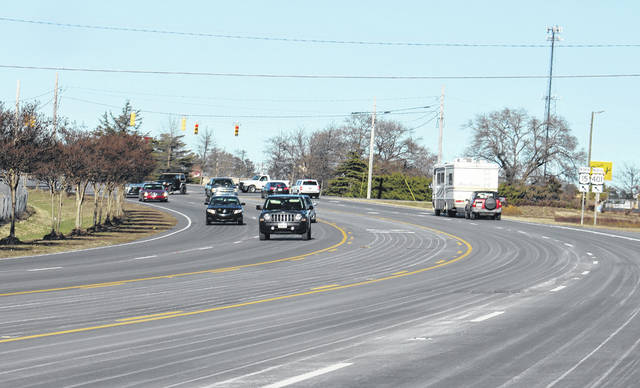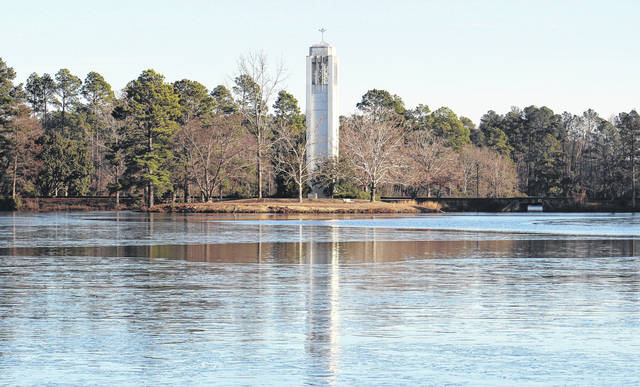LAURINBURG —Scotland County Schools will operate on an early release schedule today due a possible winter storm, officials have announced.
Meredith Bounds, public information officer for the county schools, said late Tuesday that the public school system will start at the normal time.
“The release times can be found on our district Facebook page or website,” Bounds said. “The early release is for both students and staff in anticipation of inclement weather moving in.”
The early release schedule is as follows:
Elementary — 11 am
Middle — Noon
Scotland High — 11:20 a.m.
Shaw Academy — 10:50 am
SEarCH – 1 p.m.
There is a 30 percent chance of snow for the area today with it falling sometime after 1 p.m., according to forecasts. The temperature will hover just above freezing at 36 degrees with the wind chill as low as 10 degrees with a 6 to 8 mph wind. Temperatures tonight are expected to plummet to the low 20s with a another chance of snow before 1 a.m.
Scotland school had operated on a normal school schedule Tuesday as students returned from the Christmas break, despite schools in neighboring counties opting for a two-hour delay.
School administrators say it’s always a tough call to delay or cancel classes.
Parents can visit www.scotland.k12.nc.us or the schools’ Facebook page for updates on any weather-related delays. Parents will also receive an automated text or phone call from the district is school is delayed or cancelled.
“We don’t have this kind of weather around here very often, but a two-hour delay would not have helped because the temperature was only going to increase a few degrees from 6 to 9 a.m.,” Bounds said. “If we have a delay due to cold weather it’s because there is a significant warm up that will occur during that time.”
Officials say students standing outside in the cold waiting for a bus can be a major safety concern in frigid temperatures, which is why bus drivers are taking extra time on their routes to wait for children.
“Bus drivers are waiting for children to come out of their houses and to get to the bus stops,” Bounds said. “It is cold, so children are encouraged to dress in layers. Our social workers have been checking on children throughout the district to make sure they have warm coats. Those students who don’t the social workers are making arrangements to get them a coat.”
Officials went out to all of the schools in the district on New Year’s Day to make sure the heat was working properly at all the buildings. An alarm was triggered at Scotland High School around 2 a.m. Tuesday morning and the heat was working. Sometime after that the heat in Building 1 at the high school stopped working.
The upstairs and downstairs classroom units in Building 1 were effected by the outage. Students attending classes in the those rooms were moved to the commons area and the library — where the heat was still working. Maintenance crews discovered the issue was a blown fuse and the heat was up and running by noon.
Cold conditions
Ample amounts of sunshine return for Thursday and Friday as the temperatures stay in the mid to upper 30s during the day and dip to 13 degrees Fahrenheit after the sun goes down.
While these temperatures might not seem all that cold to some, scientists say people’s reactions to cold weather depend on the environment they are accustomed to. Scotland County residents aren’t used to prolonged weeks of cold weather, just short cold-snaps that dissipate quickly and the mild 50 to 60 degree winter-weather returns.
Since people aren’t well-adjusted to such cold temperatures, precautions need to be taken, especially with children who according to the American Academy of Pediatrics are more susceptible to winter-related illnesses such as frostbite and hypothermia.
— Frostbite
Frostbite happens when the skin, and sometimes the tissue below it, freezes. Fingers, toes, ears, and noses are most likely to get frostbite. Frostbitten skin may start to hurt or feel like it’s burning, then quickly go numb. It may turn white or pale gray and form blisters.
What to do:
— If you suspect frostbite, bring the child indoors to gently warm up. Don’t rub the affected area, and don’t pop any blisters.
— Avoid placing anything hot directly on the skin. Soak frostbitten areas of the body in warm (not hot) water for 20 to 30 minutes. Warm washcloths can be applied to frostbitten noses, ears and lips.
— After a few minutes, dry and cover the child with blankets. Give him/her something warm to drink.
— If the pain or numbness continues for more than a few minutes, call a pediatrician.
— Hypothermia
When the body’s temperature drops below normal from the cold, dangerous hypothermia begins to set in. A child may start shivering, a sign the body is trying to warm itself up, but then become sluggish, clumsy, or slur his words.
What to do:
— Hypothermia is a medical emergency, so call 911 right away.
— Until help arrives, bring the child indoors. Remove any wet clothing, which draws heat away from the body.
— Wrap children in blankets or warm clothes, and give her something warm to drink. Be sure to cover core body areas like the chest and abdomen.
— If the child stops breathing or loses a pulse, give mouth-to-mouth resuscitation or CPR.
In order to prevent these conditions the American Academy of Pediatrics recommends parents check the wind chill and if the wind chill is below -15 degrees Fahrenheit being outside should be avoided. Children are encouraged to wear several thin layers along with mittens and hats.
Amber Hatten-Staley can be reached at 910-506-3170 or [email protected].



